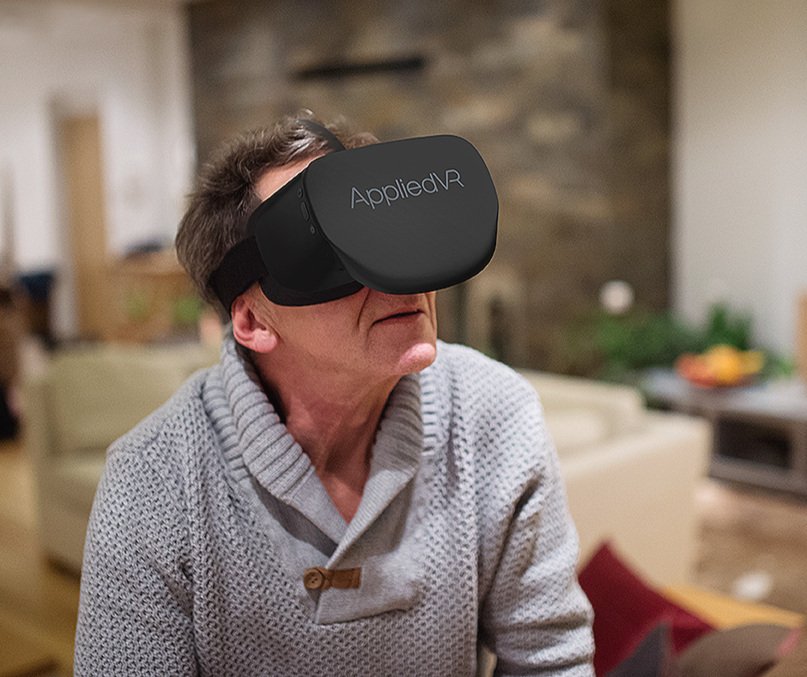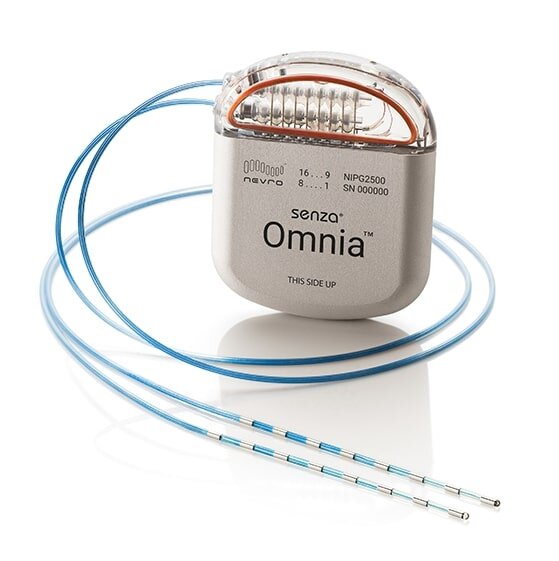By Fred Schulte, Kaiser Health News
Cristina Martinez’s spinal operation in Houston was expected to be routine. But after destabilizing her spine, the surgeon discovered the implant he was ready to put in her back was larger than he wanted to use — and the device company’s sales rep didn’t have a smaller size on hand, according to a report he filed about the operation.
Dr. Ra’Kerry Rahman went ahead with the operation, and Martinez awoke feeling pain and some numbness, she alleges. When Rahman removed the plastic device four days later and replaced it with a smaller one, Martinez suffered nerve damage and loss of feeling in her left leg, she claims.
Martinez is suing the surgeon, implant maker Life Spine Inc., and its distributor and sales representatives, alleging their negligence led to her injuries because the right part wasn’t available during her first surgery. All deny wrongdoing. The case is set for trial in November.
The lawsuit takes aim at the bustling sales networks that orthopedic device manufacturers have built to market ever-growing lines of costly surgical hardware — from spinal implants to replacement knees and artificial hips commonly used in operations. Sales in 2019 topped $20 billion, though covid-19 forced many hospitals to suspend elective surgeries for much of last year.
Device makers train sales reps to offer surgeons technical guidance in the operating room on the use of their products. They pay prominent surgeons to tout their implants at medical conferences — and athletes to offer celebrity endorsements. The industry says these practices help ensure that patients receive the highest-quality care.
But a KHN investigation found these practices also have been blamed for contributing to serious patient harm in thousands of medical malpractice, product liability and whistleblower lawsuits filed over the past decade.
Some patients allege they were injured after sales reps sold or delivered wrong-size or defective implants, while others accuse device makers of misleading doctors about the safety and durability of their products. Six multi-district federal cases have consolidated more than 28,000 suits by patients seeking compensation for injuries involving hip implants, including painful redo operations.
In other court actions, patients and whistleblowers repeatedly have accused device companies of failing to report injury-causing defects to federal regulators as required — or of doling out millions of dollars in illegal kickbacks to surgeons who agreed to use their products. Device makers have denied the allegations and many such cases are settled under confidential terms.
‘Inundated With New Implants’
At least 250 companies sell surgical hardware, and many more distribute it to doctors and hospitals across the country. Spine companies alone obtained more than 1,200 patents for devices in 2018, according to an industry report. Many come to market through a streamlined Food and Drug Administration process that approves their use because they are essentially the same as what is already being sold.
“In orthopedics, we are inundated with a multitude of new implants that debut each year,” Dr. James Kang, chairman of the orthopedic surgery department at Brigham and Women’s Hospital, remarked at a Harvard Medical School roundtable discussion published in 2019.
Kang said surgeons often rely on industry “reps” in the operating room for guidance because it is “usually burdensome and difficult” for surgeons to know “all of the intricate details and nuances” of so many products.
Martinez’s lawsuit says the process went awry during her 2018 spinal fusion in Houston, an operation in which an implant is inserted into the spinal column to replace a worn or damaged disc.
Martinez was under anesthesia, with her spine destabilized, when Rahman discovered the Life Spine surgical kit did not contain any implants shorter than 50 millimeters, or about 2 inches. That was too large, according to the complaint. Martinez, a former day care worker, blames her injuries on the redo operation, which replaced the implant with a 40 mm version Life Spine supplied later.
Through his lawyer, Rahman declined to comment. In court filings, the surgeon has denied responsibility. His operating notes, according to court pleadings, say he had ordered “all lengths available” of the implant through a Life Spine distributor and its sales reps. In a June court filing, Rahman contends the “small area of leg numbness experienced by Ms. Martinez was a known complication of the first surgery … and was not the result of any alleged negligence.”
In the court filing, Rahman also argues it was “appropriate” for him to rely on the sales reps and hospital staff to “inform him as to whether all materials and equipment needed for surgery were available.”
Illinois-based Life Spine also denies blame. In court filings, it says the sales reps initially ordered a sterile kit that included only implants from 50 mm to 55 mm long, which it duly shipped to Houston.
At the time of Martinez’s operation, Life Spine was the target of a sealed whistleblower lawsuit accusing it of paying improper consulting fees and other kickbacks to more than 60 surgeons who agreed to use its wares. Court records in the whistleblower case identify Rahman as one of the company’s paid consultants, although he and the other surgeons were not named as defendants.
Life Spine and two of its executives settled the matter in 2019 by paying a total of nearly $6 million. An orthopedic surgery expert hired by Martinez for her suit faulted Rahman for not making sure he had the right gear “prior to the start of surgery,” according to his report. The expert also criticized the sales rep for failing to bring “all available lengths to the procedure or to inform Dr. Rahman that the necessary implants were not available,” court records show. The sales rep and distributor denied any blame, arguing in court filings that they “met all applicable standards of care.”
Frenzied Competition for Sales
Major device makers train a corps of sales agents, some recruited right out of college, to cultivate and work closely with surgeons — one likened the relationship to a caddy and an avid golfer. Duties can include lugging 20-pound sets of surgical hardware to the operating room, assuring it is sterile and knowing its specifications, though the reps are not required to have medical training or credentials.
Stryker, one of the nation’s top four spine implant manufacturers, spends what it calls “a significant amount of time and money” to train reps. When hired, they typically “shadow” other reps for three to six months, then attend a 10-day intensive “Spine School” and other training. In all, the company said in a court filing, it typically takes eight to 18 months, often longer, to develop “long-term relationships” with customers.
For those who do, the jobs can pay handsomely. Veteran reps who influence which brands of hardware surgeons select command salaries and bonuses that can stretch into the low six figures and beyond, court records show.
The market is so hotly competitive that device makers typically require reps to sign contracts that prohibit them from working for a rival company in the same territory for a year or more — and aren’t shy about suing to fend off raids on their staffs, court records show.
In 2019, DePuy Synthes sued an Alabama sales rep who jumped ship, blaming him for stealing away accounts “worth millions of dollars practically overnight.” An arm of health care giant Johnson & Johnson, DePuy Synthes filed at least two dozen similar suits from 2014 through the end of 2020, court records show. Most, including the case of the Alabama sales rep, have been settled under confidential terms.
Some companies have spent lavishly to poach experienced sales agents — practices that can violate business conduct laws. One allegedly paid a New York sales pro a “staggering, seven-figure signing bonus.” Another is said to have dangled an $800,000-a-year job as “director of surgeon education,” while a gambit to make inroads in the Phoenix market dubbed “Sun Devil” guaranteed a branch manager a $500,000 annual salary, court records show. Another promised a sales agent $900,000 paid out over three years.
Whistleblowers and government investigators have argued for years that so much money changing hands can lead to kickbacks or other marketing schemes that corrupt medical judgment and endanger patients. Some injury suits also have blamed sales reps and distributors for staying mum about product deficiencies they observed in the operating room. These cases often are settled with no admission of wrongdoing.
Sometimes, surgeons help promote implants at medical meetings and other gatherings. Orthopedic surgeons and neurosurgeons received a total of about $511 million in industry consulting fees from 2013 through 2019 and nearly $300 million more for “serving as faculty or speaker” at industry-sponsored events, a KHN analysis of government data found.
Dozens of lawsuits have taken aim at Indiana device maker Biomet’s advertising a hip replacement for “younger, more active patients” that showcased Olympic gold medal gymnast Mary Lou Retton. One ad says “Mary Lou lives pain-free, and so should you.” Yet Retton suffered painful heavy-metal poisoning requiring the implant’s removal and sued the company for damages, according to court records. Retton said she and Biomet settled the suit in 2019 under confidential terms.
Defects Ignored or Downplayed
Whether touted by renowned surgeons or celebrities, orthopedic surgery marketing materials stress quick improvement in a person’s quality of life. That proves true for most patients. Yet researching how often implants fail or cause life-changing injuries — and which brands have the best safety records — can be daunting.
The FDA requires device makers to advise the agency of information “that reasonably suggests” a device they sell “may have caused or contributed to a death or serious injury or has malfunctioned” in a way that could recur. The FDA posts the reports on a public website, with the caveat that they may convey “incomplete, inaccurate, untimely, unverified, or biased data.”
KHN found that thousands of malpractice and product liability lawsuits have accused device marketers of concealing or downplaying hardware defects, leaving patients and their doctors in the dark about possible risks. In many cases, these claims are bolstered by company records, or actions by state or federal regulators.
In 2019, for instance, DePuy Synthes paid $120 million to settle a lawsuit filed by 46 state attorneys general; the suit accused the company of advertising that a replacement hip it sold lasted three years in 99.2% of operations, when it knew of data showing that 7% had failed within that time. The company did not admit wrongdoing in settling the case.
British device company Smith & Nephew faces a federal civil proceeding comprising nearly 1,000 injury suits, including one that says the company “underreported and withheld” notices of malfunctions and “willfully ignored the existence of numerous complaints about [its] failures.”
An expert hired by the patients cites a company audit showing “significant adverse events” were logged from two days to 142 days late, while a corporate memo circulated among executives to push sales was titled “Milk the Cash Cow,” according to court records. Smith & Nephew has denied the allegations and in one court paper called the expert’s opinions “speculative.”
John Saltis is suing spinal device company NuVasive over its handling of his complaint that a screw holding his spinal implant in place snapped in May 2016, about 17 months after his operation.















